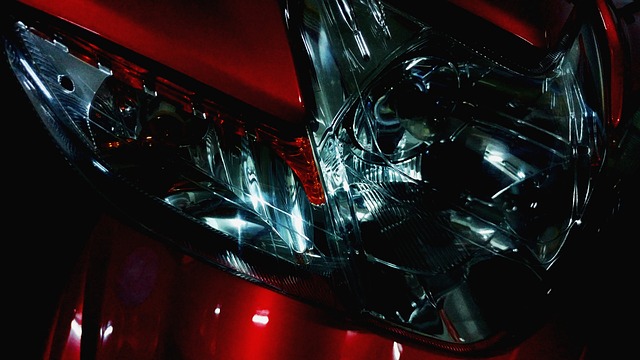When night falls and the road ahead is shrouded in darkness, having a reliable flashlight for automotive emergencies can be a game-changer. This article illuminates the critical aspects of flashlight safety during late-night drives, ensuring you’re prepared for unexpected situations. From selecting the right flashlight for your vehicle to understanding its best uses and practices, we guide you through each step. Learn about flashlights for automotive emergencies, their features, and how to maintain them safely while respecting legal guidelines on roadways. Stay informed and drive safe.
- Understanding the Role of Flashlights in Automotive Emergencies
- Preparing Your Vehicle with the Right Kind of Flashlight
- Best Practices for Using Flashlights During Late-Night Drives
- Flashlight Selection: Features to Look For in an Automotive Flashlight
- Safe Techniques for Employing Flashlights Outside Your Vehicle
- Battery Safety and Maintenance When Using Flashlights in the Dark
- Legal Considerations and Etiquette When Using Flashlights on Roadways
Understanding the Role of Flashlights in Automotive Emergencies
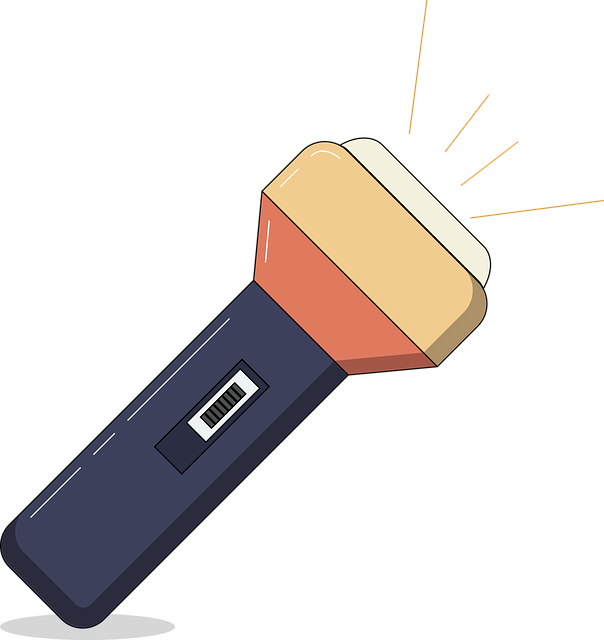
When navigating the roadways, particularly during late-night drives, flashlights for automotive emergencies serve as a critical tool for safety and efficiency. In the event of a breakdown or an accident, a flashlight can illuminate dark areas, allowing drivers to identify potential hazards like oil leaks, debris, or other dangers that could be present near or on the road. Its light can also signal for help, directing attention to the stranded vehicle. Moreover, a reliable flashlight is indispensable for performing tasks such as checking under the hood or changing a tire in conditions where visibility is low. It’s not just about having any flashlight; selecting a model designed for automotive emergencies means choosing one with durability, a robust beam, and ideally, features like water resistance and shockproof construction to withstand the harsh conditions often encountered on the roadside.
Incorporating a flashlight specifically designed for automotive emergencies into your vehicle’s preparedness kit is a proactive step that can significantly enhance safety during unexpected nighttime events. These specialized flashlights are often equipped with high-intensity LEDs, offering a bright, focused light that can cut through darkness effectively. Additionally, some models come with additional functionalities such as SOS strobe settings to aid in distress signaling or emergency marking. The versatility and functionality of these devices make them an essential component for drivers who prioritize safety and preparedness on their nighttime journeys. Understanding the role of flashlights in automotive emergencies is paramount, as they can be the difference between a manageable situation and one that escalates due to poor visibility.
Preparing Your Vehicle with the Right Kind of Flashlight

When embarking on late-night drives, preparing your vehicle with a reliable flashlight is non-negotiable for automotive emergencies. It’s crucial to select a flashlight designed specifically for automotive use, as these are engineered to be robust and resilient, withstanding the harsh conditions often encountered in a car’s environment. Flashlights for automotive emergencies should be compact yet bright enough to illuminate areas without draining your vehicle’s battery prematurely. Consider flashlights that offer features such as high-intensity LED bulbs, multiple lighting modes, and a durable design with rubber grips to prevent slipping. Additionally, they should have a secure mounting option or come with a strong clip to attach to your vehicle’s interior without obstructing controls or visibility. By having a flashlight that fits these criteria, you ensure that you are well-prepared for unexpected breakdowns, flat tires, or navigating through dark parking lots or unfamiliar roads at night. Always check the battery status before setting out on your journey to avoid being caught in a critical situation without a functioning light source. Properly prepared flashlights for automotive emergencies can be a lifesaver, enhancing visibility and providing peace of mind during nighttime travels.
Best Practices for Using Flashlights During Late-Night Drives
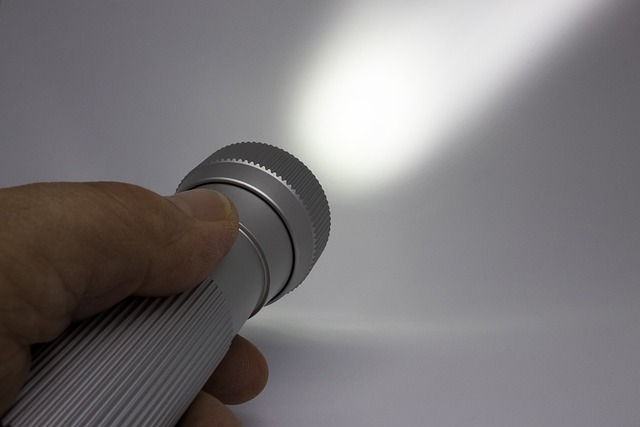
When driving late at night, safety is paramount, especially if you encounter an automotive emergency. Flashlights for automotive emergencies serve as indispensable tools in such situations. To ensure your safety while using a flashlight during these times, it’s crucial to practice proper handling and techniques. Firstly, always keep your flashlight easily accessible within the vehicle, preferably in a designated compartment that is not cluttered with other items. This way, you can retrieve it quickly without searching in the dark or distracting the driver.
In the event of a breakdown or when inspecting your vehicle after dark, use a flashlight to illuminate the area safely. Opt for a flashlight that offers different modes, such as focused beam and wide floodlight, to direct light exactly where it’s needed without causing glare that could blind you or oncoming traffic. Additionally, select flashlights designed with automotive emergencies in mind, featuring sturdy construction and high-quality LED bulbs that offer both durability and reliable illumination. Remember to always point the beam away from your eyes and others’, and be mindful of reflective surfaces that could return the light into your eyes or the eyes of emergency personnel. By adhering to these best practices, you can effectively use flashlights for automotive emergencies without compromising your safety or that of others on the road during late-night drives.
Flashlight Selection: Features to Look For in an Automotive Flashlight
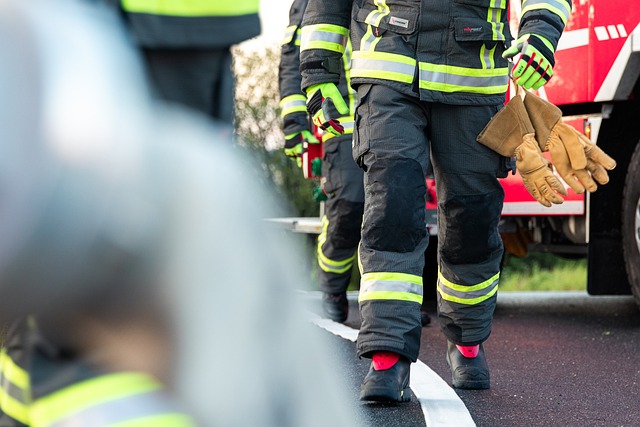
When selecting a flashlight for automotive emergencies, safety and reliability are paramount. A high-quality automotive flashlight should have a durable design to withstand the rigors of travel and the potential for rough handling in an emergency situation. Look for a flashlight that is impact resistant, preferably made with a robust material like aluminum or aircraft-grade titanium, to ensure it can endure accidental drops or impacts against vehicle components. Additionally, water resistance is crucial, as you may need to use the flashlight in wet conditions or after driving through adverse weather. A flashlight for automotive emergencies should also feature a secure mounting option or a clip that can attach to your visor or dashboard without obstructing your view.
Consider a flashlight with adjustable brightness settings to conserve battery life when full illumination isn’t necessary and to avoid blinding yourself or oncoming traffic if you need to step out of the vehicle. A focused beam is essential for long-range visibility, such as checking the roadside at night, while a wider beam can be useful for close-up tasks like inspecting under the hood. LED technology is highly recommended due to its longevity and efficiency compared to older bulb types. Lastly, ensure the flashlight has a reliable power source; some models come with rechargeable batteries or can be powered by your vehicle’s DC outlet, which is particularly useful during extended emergencies. By investing in a flashlight with these features, you can enhance your safety and preparedness for late-night drives and unexpected automotive emergencies.
Safe Techniques for Employing Flashlights Outside Your Vehicle

When navigating late-night roads, having a flashlight for automotive emergencies can be invaluable. To ensure safety while using a flashlight outside your vehicle, it’s crucial to adopt the right techniques. Firstly, always park your car on a safe, well-lit area if you encounter an emergency that requires the use of a flashlight. Use your hazard lights to increase visibility to other motorists and maintain your vehicle close but clear of the work area. When directing light, keep your beam below eye level to avoid blinding yourself or oncoming traffic, which is both a safety hazard and illegal in many jurisdictions. Flashlights with adjustable focus lenses are ideal as they allow you to direct a narrow beam over long distances or widen the light for close-up tasks. To prevent the risk of fire or accidental injury, never leave a flashlight unattended or aim the beam towards flammable materials. Additionally, consider flashlights with hands-free options or sturdy bases that can stand on their own, enabling you to work without holding the light, thus keeping your hands free for necessary tasks or self-protection. Always follow the manufacturer’s guidelines and best practices when employing flashlights during automotive emergencies to ensure both your safety and the safety of others on the road.
Battery Safety and Maintenance When Using Flashlights in the Dark
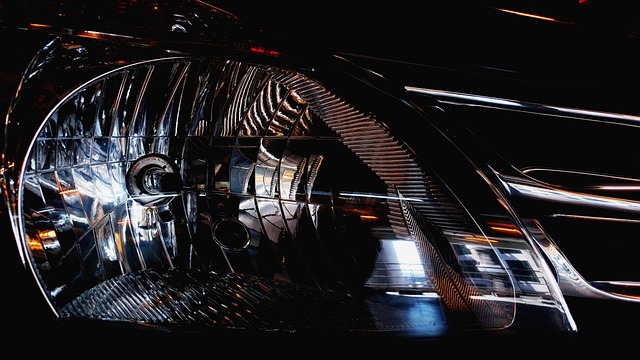
When venturing out on late-night drives, safety precautions are paramount, especially when relying on flashlights for automotive emergencies. Battery safety and maintenance are crucial aspects to consider with flashlight usage. High-quality alkaline or rechargeable lithium batteries are recommended for their reliability and longevity. It’s essential to store spare batteries in a cool, dry place to prevent deterioration and ensure they are at full charge when needed. Regularly inspect the battery compartment of your flashlight for corrosion or damage, as these can impair performance or pose safety risks. When using rechargeable batteries, adhere to the manufacturer’s guidelines for charging cycles to avoid overcharging, which can lead to reduced battery life or overheating.
Maintaining your flashlight involves more than just the batteries; the flashlight itself requires attention. Ensure that the lens is clean and free of scratches for optimal light transmission. Check the seals and O-rings to prevent moisture intrusion, which can cause short-circuiting or corrode internal components. A well-maintained flashlight not only provides a reliable light source during automotive emergencies but also extends its lifespan and ensures that it functions when you most need it. Always keep your flashlight accessible within the vehicle, and familiarize yourself with its operation so that in an emergency, you can quickly activate the light without fumbling in the dark. This preparation can be the difference between a manageable situation and one that escalates due to poor visibility. Flashlights for automotive emergencies are not just a tool but an integral part of your vehicle’s safety kit.
Legal Considerations and Etiquette When Using Flashlights on Roadways
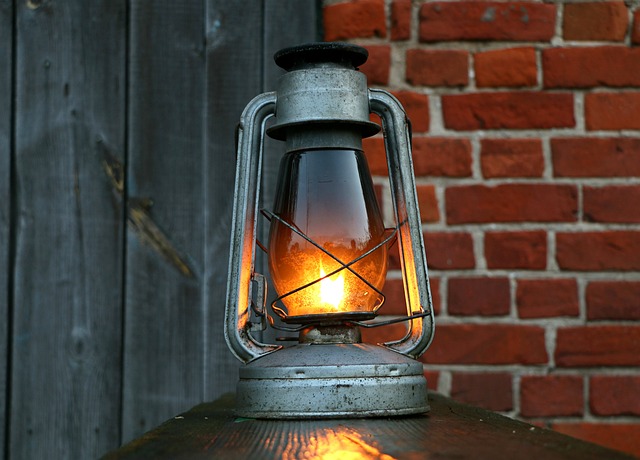
When navigating roadways during automotive emergencies or late-night drives, the use of flashlights must be approached with both legal awareness and considerate etiquette. Legally, it’s imperative to follow the regulations set forth by your jurisdiction; many areas prohibit the use of flashlights on roadways except in emergencies. If a flashlight is necessary—for instance, to signal for help or to safely navigate a stalled vehicle—ensure its beam is directed away from approaching traffic and not into drivers’ eyes. This not only adheres to legal requirements but also maintains the safety of all motorists. Additionally, flashing lights can be misinterpreted as an emergency vehicle, potentially causing confusion and hazards on the road. Therefore, when using flashlights for automotive emergencies, it’s crucial to use a steady light and position yourself safely off the road if possible.
Etiquette plays a significant role in the responsible use of flashlights during emergencies on roadways. The consideration of fellow drivers is paramount; a focused beam of light can disorient or temporarily blind another driver, leading to accidents. Thus, it’s important to use the flashlight judiciously and with intention. If you must signal for assistance, do so from within your vehicle or in a manner that does not interfere with oncoming traffic. Moreover, choose a flashlight that offers sufficient brightness while still providing adequate light distribution to avoid unnecessary glare. By respecting both legal guidelines and the unwritten rules of roadside etiquette, you can ensure your safety and the well-being of others during automotive emergencies at night.
